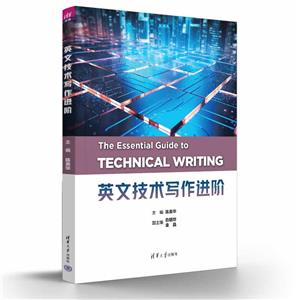Chapter 1 Technical Writing:A Brief Introduction-11.1 Rhetorical Aspects of Technical Writing21.2 The Author and Audience of Technical Writing91.2.1 The Author of Technical Writing91.2.2 The Audience of Technical Writing--141.3 The lmportance of Technical Writing in theWorkplace152.1 The C.R.A.P Principles202.1.1 Contrast 202.1.2 Repetition222.1.3 Alignment232.1.4 Proximity 252.2 Typefaces and Line Length 272.2.1 Typefaces272.2.2 Line Length29Chapter 1 Technical Writing:A Brief Introduction-11.1 Rhetorical Aspects of Technical Writing21.2 The Author and Audience of Technical Writing91.2.1 The Author of Technical Writing91.2.2 The Audience of Technical Writing--141.3 The lmportance of Technical Writing in theWorkplace15
Chapter 2 Constructing Effective Documents:Design Principles and Visualization192.1 The C.R.A.P Principles202.1.1 Contrast 202.1.2 Repetition222.1.3 Alignment232.1.4 Proximity 252.2 Typefaces and Line Length 272.2.1 Typefaces272.2.2 Line Length292.3 Visualization in Technical Writing302.3.1 Tables302.3.2 Graphs 332.3.3 Charts352.3.4 Infographics382.3.5 Mind Maps47
Chapter3 Writing Business Correspondence 533.1 Principles of Effective Correspondence543.1.1 Creating Goodwill543.1.2 Communicating Honestly53.1.3 Using a Suitable Tone and the "You"Attitude53.1.4 Providing Need-to-Know Information Accuratelyand Logically553.1.5 Using Concise,Standard Language andAvoiding Cliches563.2 Basic Pattern of Business Correspondence563.2.1 Letters: Features, the Rhetorical Situation,and Elements 573.2.2 E-mails: Features, the Rhetorical Situation, Elements,and Netiquettes603.2.3 Memos: Features, the Rhetorical Situation, Elements,and Format633.3 Language Styles of Daily Correspondence 693.3.1 Language for Informative and Good Messages --693.3.2 Language for Bad News Messages693.3.3 Language for Persuasive Messages703.4 Chapter Examples72
Chapter 4 Writing for Employment 774.1 Resumé--784.2 Letter ofApplication---804.3 Follow-up Message824.4 Portfolio824.5 Chapter Example 84
Chapter 5 Writing Proposals 895.1 Definition905.2 Rhetorical Situations-915.2.1 Author---915.2.2 Audience915.2.3 Purpose915.2.4 Format915.2.5 Structure925.2.6 Strategy925.3 Types of Proposals -935.3.1 Internal vs External Proposals-935.3.2 Solicited vs Unsolicited Proposals935.3.3 Proposals for Specific Purposes935.4 How to Write a Persuasive Proposal-1065.5 Chapter Example 107
Chapter 6 Writing Reports1156.1 Definition--1166.2 Rhetorical Situations1166.2.1 Considering the Audience1166.2.2 Understanding the Purpose1166.3 Types of Reports1176.4 Effective Strategies for Writing Persuasive Report1356.5 Chapter Example 137
Chapter 7 Writing Instructions -1477.1 Rhetorical Situations1487.1.1 Understanding the Audience and the Purpose 1487.1.2 Gaining Insights into Products and Procedures 1497.2 Formats and Key Components1497.2.1 Formats of Instructions1507.2.2 Key Components of Instructions-1547.3 Effective Strategies for Writing Effective Instructions 1587.3.1 Defining Key Concepts-1587.3.2 Writing Step-by-Step Instructions1617.3.3 Designing Clear,Attractive Pages 1637.3.4 Writing Safety Information1667.4 Chapter Examples 168
Chapter 8 Researching to Write1758.1 User Research-1768.1.1 How to Conduct User Research1768.1.2 Suggested Steps in Conducting User Research 1798.2 Task Analysis1858.3 Interviews1868.4 Research Reports 1878.5 User Personas1888.5.1 Understanding User Personas1888.5.2 Constructing and Utilizing User Personas1908.6 Chapter Example 191
References 199





















